
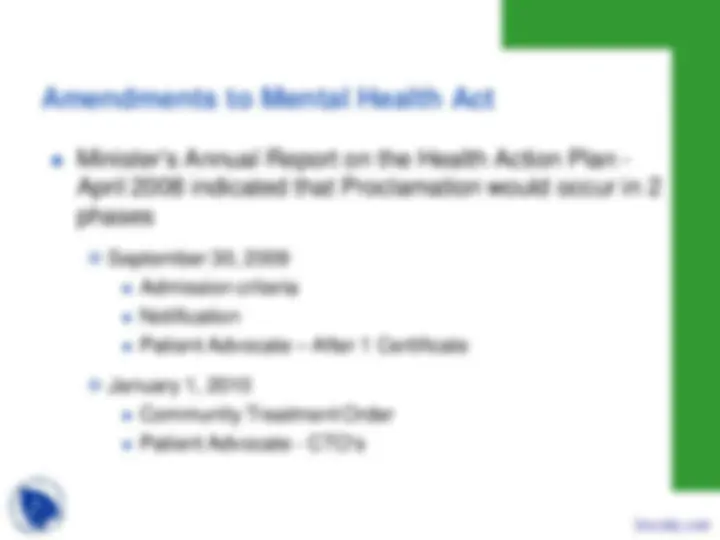
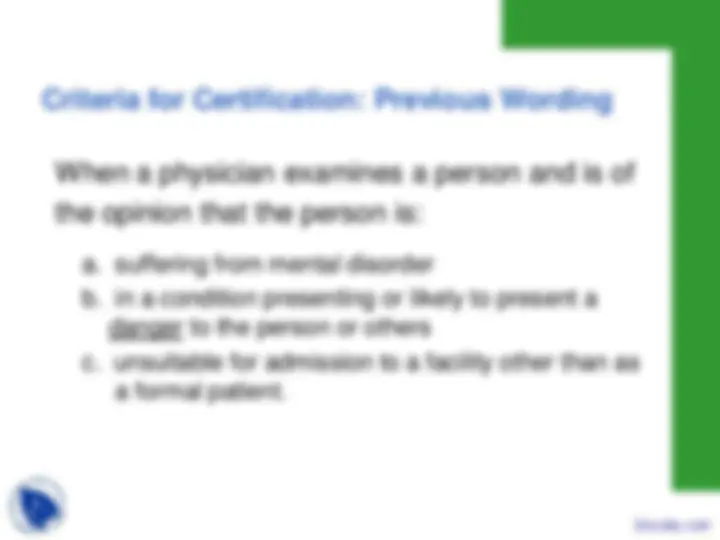

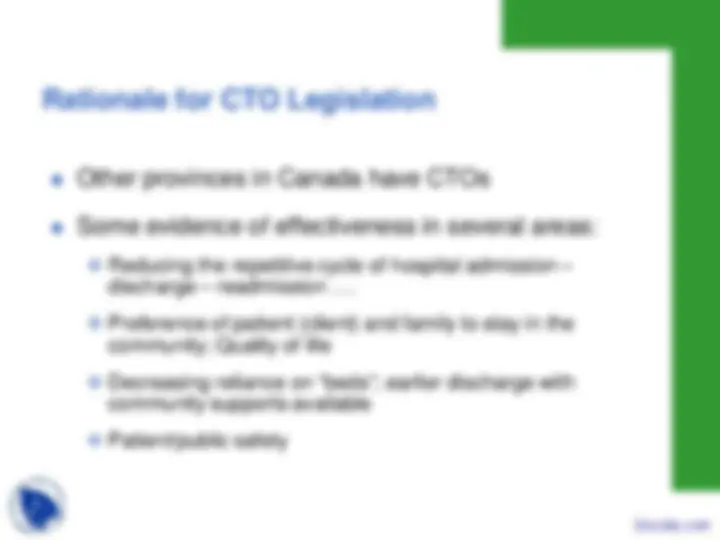

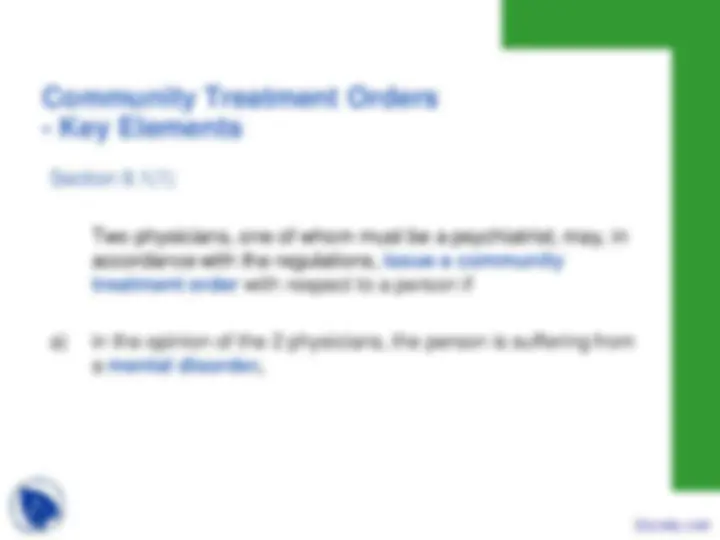


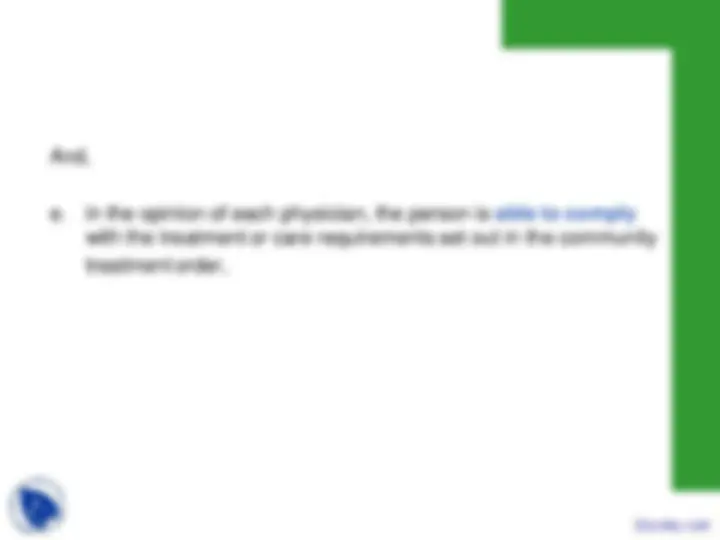
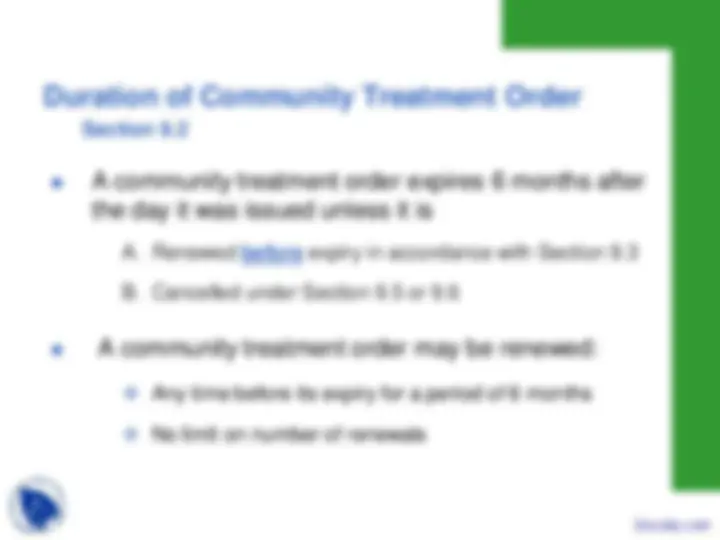
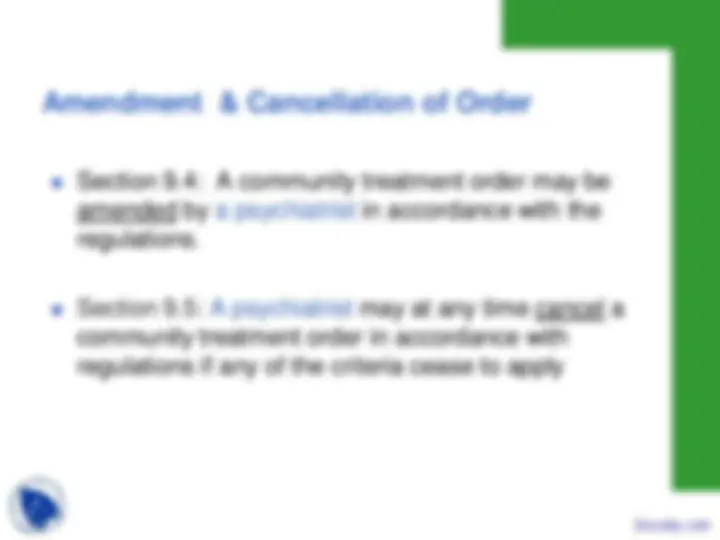

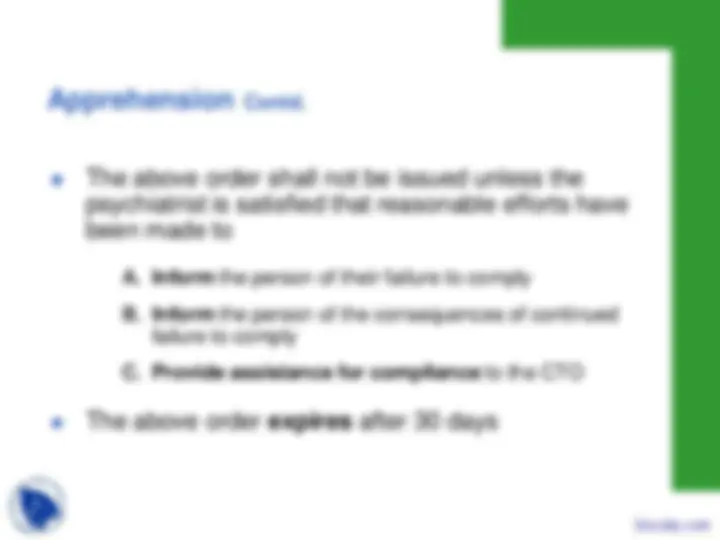
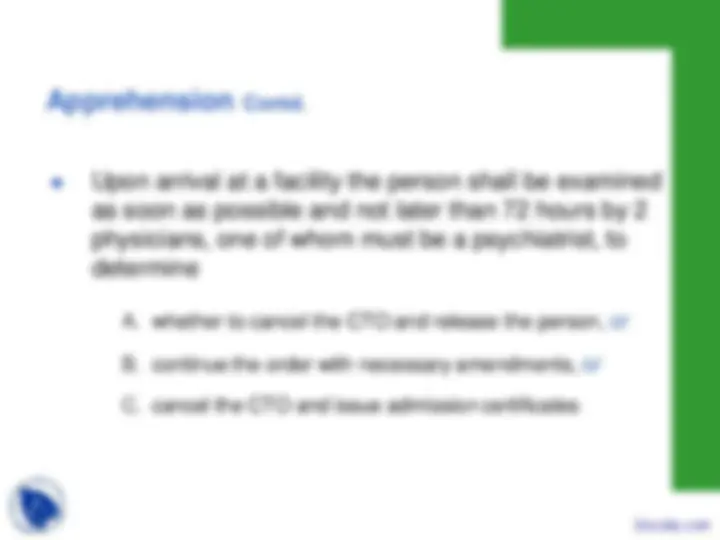
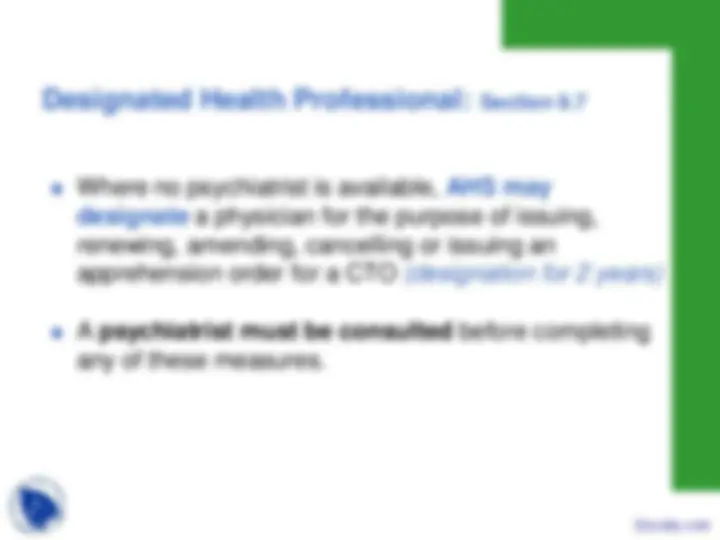
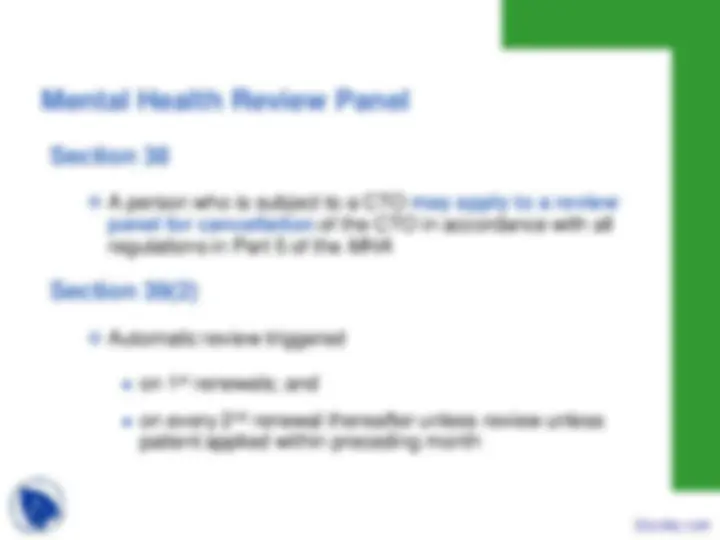
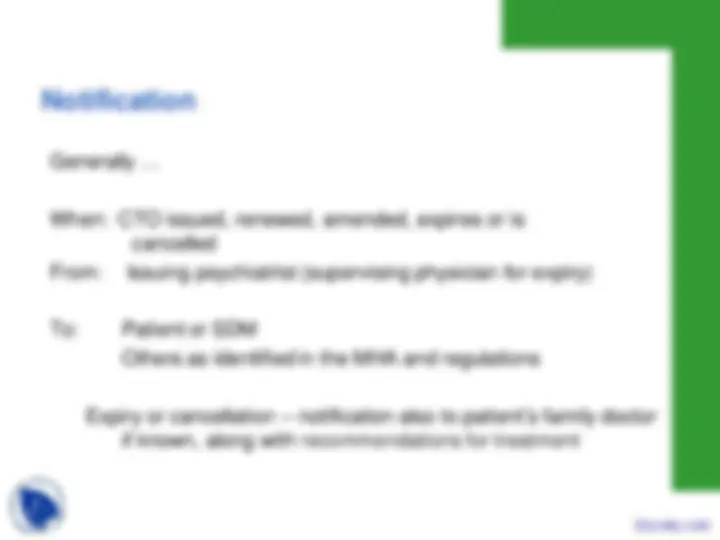
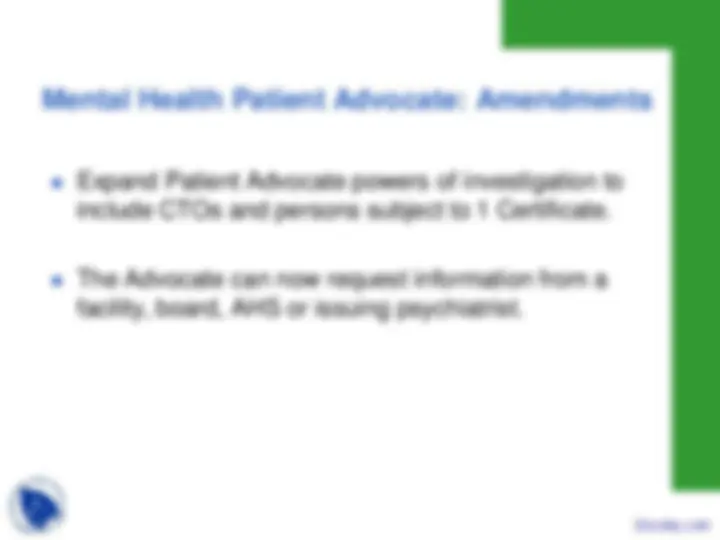


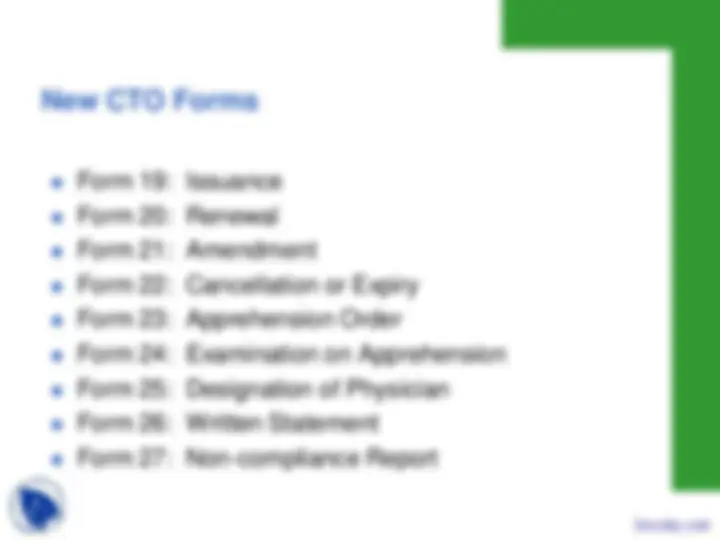
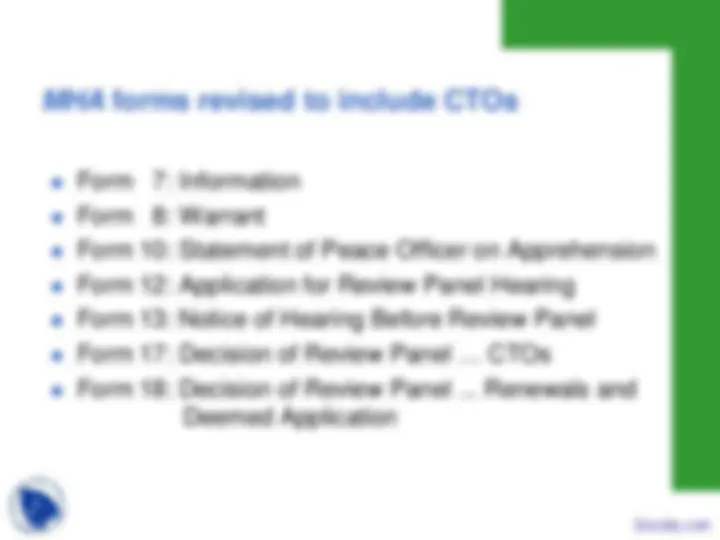
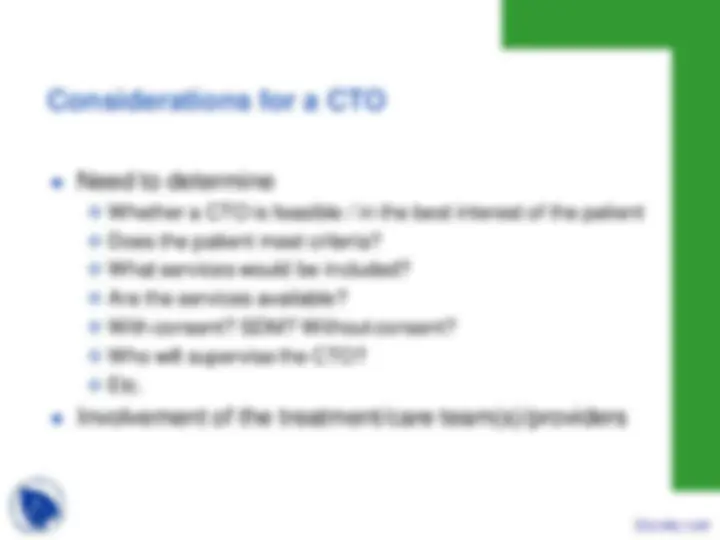
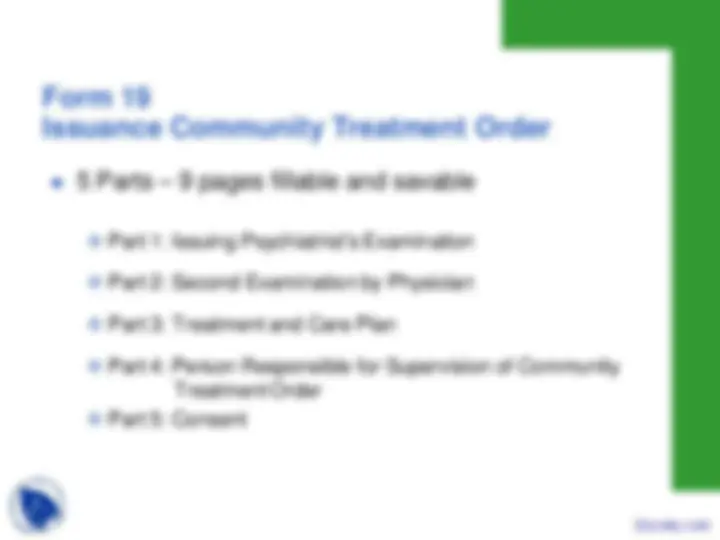







Study with the several resources on Docsity

Earn points by helping other students or get them with a premium plan


Prepare for your exams
Study with the several resources on Docsity

Earn points to download
Earn points by helping other students or get them with a premium plan
Community
Ask the community for help and clear up your study doubts
Discover the best universities in your country according to Docsity users
Free resources
Download our free guides on studying techniques, anxiety management strategies, and thesis advice from Docsity tutors
Mental Health Act, Amendments to Mental Health Act, Mental Disorder, Notification of Family Physician, Community Treatment Orders, Rationale for Cto Legislation, Immediately Preceding are some points from Introduction to Geriatrics lecture.
Typology: Slides
1 / 37

This page cannot be seen from the preview
Don't miss anything!






























2
4
5
Sept 30 Amendment states: When a physician examines a person and is of the opinion that the person is:
A. suffering from mental disorder
B. likely to cause harm to the person or others or to suffer substantial mental or physical deterioration or serious physical impairment, and;
C. unsuitable for admission to a facility other than as a formal patient.
7
Intended to respond to the unique circumstances of patients in a repetitive cycle of hospital admission (formal) - discharge - readmission; and provide an additional treatment option that is less restrictive than remaining as an involuntary patient in a facility.
Designed for the persons who are chronic and seriously mentally ill and unable to maintain themselves in the community without treatment
8
Reducing the repetitive cycle of hospital admission – discharge – readmission ….
Preference of patient (client) and family to stay in the community; Quality of life
Decreasing reliance on “beds”; earlier discharge with community supports available
Patient/public safety
10
Section 9.1(1)
Two physicians, one of whom must be a psychiatrist, may, in accordance with the regulations, issue a community treatment order with respect to a person if
a) in the opinion of the 2 physicians, the person is suffering from a mental disorder,
11
b. one or more of the following apply;
i. within the immediately preceding 3-year period the person has - on 2 or more occasions , or - for a total of a least 30 days,
A. been a formal patient in a facility, or
B. been in an approved hospital or been lawfully detained in a custodial institution where there is evidence satisfactory to the 2 physicians that, while there, the person would have met the criteria set out in section 2(a) and (b) at that time, or
C. combination of (A) and (B)
13
And,
c. the 2 physicians, after separate examinations of the person by each of them within the immediately preceding 72 hours, are both of the opinion that the person is likely to cause harm to the person or others or to suffer substantial mental or physical deterioration or serious physical impairment if the person does not receive continuing treatment or care while living in the community.
14
And that,
d. the treatment or care the person requires exists in the community, is available to the person and will be provided to the person.
16
And,
either;
i) consent has been obtained,
A. If the person is competent, from the person, or
B. If the person is not competent, in accordance with Section 28 (1) (Substitute decision-makers) or;
17
ii) consent to the issuing of the CTO has not been obtained but in the opinion of the issuing physicians
A. the person has a history of community non- compliance to care which is necessary to prevent harm to others , and;
B. a CTO is reasonable and less restrictive than formal patient status.
19
20
A. to apprehend and convey that person to the facility for an examination
B. to take reasonable measures, including entering of physical premises and the use of physical restraint
C. to care for, observe, detain and control the person during conveyance.